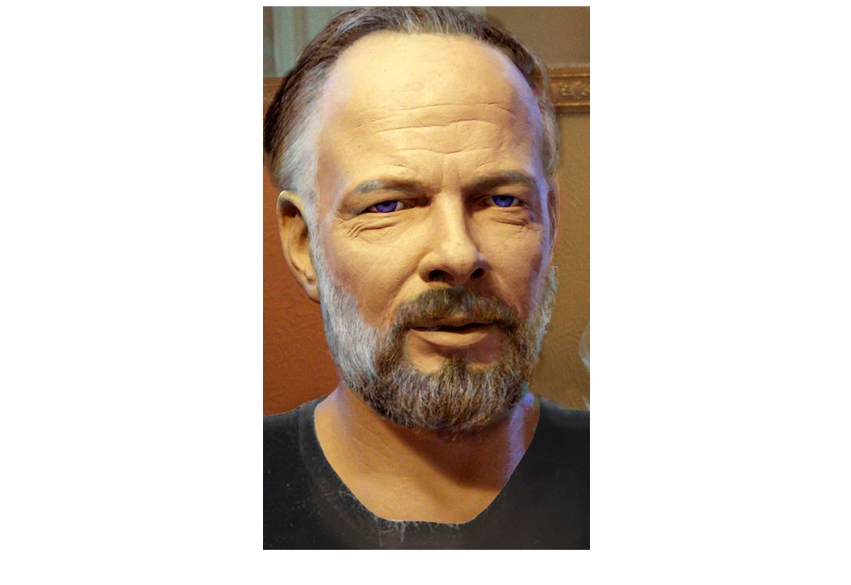In December 2005, a passenger on an early-morning flight from Dallas to Las Vegas fell asleep. Woken by a steward when the plane touched down, the man wearily disembarked and took a connecting flight to San Francisco. It was only there that he realised he’d forgotten an item of hand luggage on the first flight. Despite heroic attempts to retrieve it, the item was never seen again. This is a pity. The item was the head of Philip K. Dick.
Not his real head, of course. That had been cremated, along with the rest of the science fiction writer, in 1982, shortly before the release of Blade Runner, the film based on his novel Do Androids Dream of Electric Sheep? The head was part of a robotic replica of Dick (and yes, its creators did toy, briefly, with calling it the Dick Head). The passenger who lost it was David Hanson, one of the team of AI (Artificial Intelligence) enthusiasts who had designed and built the replica. This book is the account of how they did it, and wowed the AI and sci-fi communities in America. If the word ‘geek’ is now flashing across your mind, it shouldn’t be. This story is touching, absorbing and, ultimately, an exploration of what it means to be human.
It begins when Hanson and his colleagues set themselves the challenge of creating an android that’s as lifelike as possible. Such creatures being a recurring theme in Dick’s work (not least in Do Androids Dream …), they decide to model both its appearance and personality on the author himself, and to call it ‘Phil’. Early research involves adapting a Billy Bass singing fish so it can deliver a lesson on Newtonian physics. Phil has cameras for eyes, microphones for ears and electric motors for facial muscles, the latter operating under Frubber, a frighteningly realistic artificial skin.
His ‘brain’ is a collection of state-of-the-art computer programs: speech recognition software to understand with what is being said to him, ‘chatbot’ wizardry to generate his responses (based on transcripts of real Philip K. Dick interviews), and so on. We learn just how easy it can be for computers to mimic human conversation — hearing the word ‘always’, for instance, they might be programmed to respond with ‘give me a specific example’.
In fine-tuning Phil’s range of facial expressions, the team discover that genuine smiles give us crows’ feet around the eyes, while fake ones don’t. They have to be careful writing the software — contradictory instructions could cause motors to pull in opposite directions and rip Phil’s face apart.
Of course we’re a long way off creating androids as convincing as Rutger Hauer’s in Blade Runner; some argue that we’ll never be able to do it. So why bother, you ask? Well if nothing else, each of Phil’s failures is a reminder of just how incredible we are. His conversations require a soundproof room, as background noise confuses him (proving the old radio maxim that a microphone is an ear without a brain). It’s difficult even for Phil to know when someone has stopped talking, a skill we take for granted. As for moving about — forget it. It’s taken the Japanese hundreds of millions of dollars just to develop a robot that can walk upstairs. Another creature, designed for hard floors, is foxed by carpets. Even Marvin Minsky, the godfather of AI, admits that no machine has the intelligence of a two-year-old child.
And yet … The most engaging moments in this highly engaging book challenge that notion of effortless human superiority. A writer from the Wall Street Journal gets annoyed when Phil sneers at him. Dick’s daughter is unnerved by the experience of listening to Phil talk about her and her mother. One of the team members, asked by a young girl if Phil can think, replies: ‘No’. ‘Then how can it answer my questions?’ comes the reply. The team member falls silent, unable to think of an answer. If Phil had done that (as he often does), we’d be talking about ‘useless computers’.
The question you find yourself asking all the way through this story is: who am I? What am I? Where is the ‘I’ that makes me an I? In my brain, my body, my nervous system? As he constructs Phil’s face, Hanson at first uses the latest scientific research on physiognomy. Finding this inadequate, he resorts to his own intuition, and comes up trumps. So it takes a human being to make a convincing robot — but even then he can’t tell you how he did it. Who, you’re tempted to ask, made the human? Do we annoy Richard Dawkins and give some variation or other on the answer ‘God’? And if we do — does God know how he does what He does?





Comments